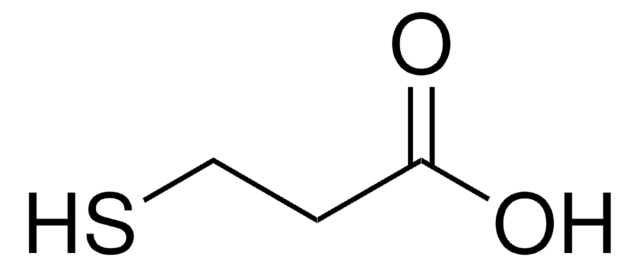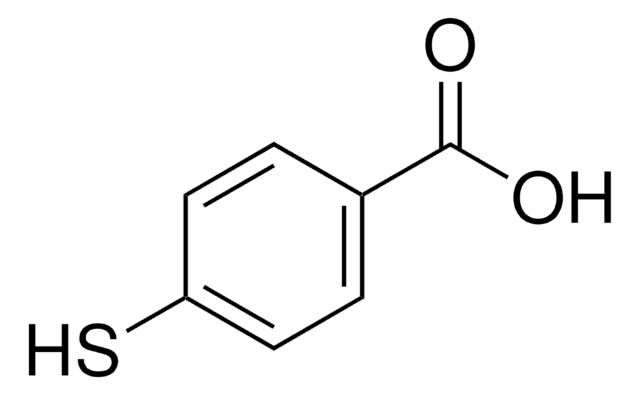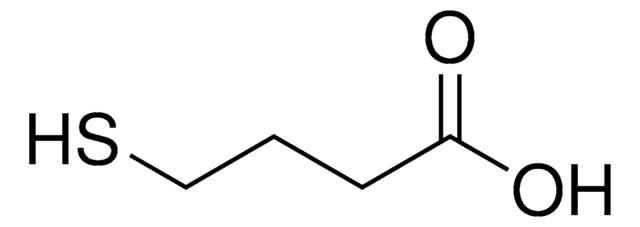450561
11-Mercaptoundecanoic acid
95%
Synonym(s):
MUA, MUDA
About This Item
Recommended Products
Assay
95%
form
solid
mp
46-50 °C (lit.)
SMILES string
OC(=O)CCCCCCCCCCS
InChI
1S/C11H22O2S/c12-11(13)9-7-5-3-1-2-4-6-8-10-14/h14H,1-10H2,(H,12,13)
InChI key
GWOLZNVIRIHJHB-UHFFFAOYSA-N
Looking for similar products? Visit Product Comparison Guide
General description
Application
Signal Word
Warning
Hazard Statements
Precautionary Statements
Hazard Classifications
Eye Irrit. 2 - Skin Irrit. 2 - STOT SE 3
Target Organs
Respiratory system
Storage Class Code
11 - Combustible Solids
WGK
WGK 3
Flash Point(F)
No data available
Flash Point(C)
No data available
Personal Protective Equipment
Regulatory Listings
Regulatory Listings are mainly provided for chemical products. Only limited information can be provided here for non-chemical products. No entry means none of the components are listed. It is the user’s obligation to ensure the safe and legal use of the product.
JAN Code
450561-5G:
450561-25G:
450561-VAR:
450561-BULK:
Choose from one of the most recent versions:
Already Own This Product?
Find documentation for the products that you have recently purchased in the Document Library.
Customers Also Viewed
Articles
Inorganic nanomaterials are tunable by size, shape, structure, and/or composition. Advances in the synthesis of well-defined nanomaterials have enabled control over their unique optical, electronic, and chemical properties stimulating tremendous interest across a wide range of disciplines. This article illuminates some of the recent research advances of inorganic nanoparticles (NPs) in optoelectronics applications.
Global Trade Item Number
| SKU | GTIN |
|---|---|
| 450561-25G | 4061832323817 |
| 450561-5G | 4061832323824 |
Our team of scientists has experience in all areas of research including Life Science, Material Science, Chemical Synthesis, Chromatography, Analytical and many others.
Contact Technical Service














